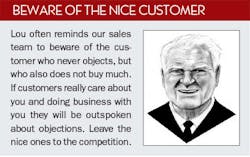Flow States are real physiological events — the “perfect storm” of focus, challenge, skills, risk and clarity of purpose that trigger a unique set of brain activities. Our Sales Flow Program is intended to create a work environment in which salespeople can frequently attain Flow States, because they result in the highest levels of performance and provide a great sense of satisfaction. Using old leadership practices that were effective back in the day doesn’t cut it. If you want a fully engaged, high performing, diverse sales team today, you must change to leadership techniques that give team members what they want, including the exhilaration that comes from reaching Flow States. Employees who operate in Flow States will find your team a great place to work. They will also draw other top performers to your company like magnets.
From two authoritative works on this subject, The Rise of Superman, by Steven Kotler and Flow, by Mihaly Csikszentmihalyi, we’ve isolated five factors that make an electrical wholesaler’s workplace Flow-Conducive. Although you will recognize them as factors you’ve always been concerned about, we challenge you to consider them from a new perspective.
1. Attitude is passionate and sober — no B.S. given, and none allowed.
2. Focus means “80/20 on steroids” for today’s salespeople.
3. Goals match skills and they are clear, barely achievable and all are articulated at least weekly.
4. Communications are respectful and brutal — frequent, frank, in-person discussions with lots of listening to all.
5. No passengers allowed — Everyone must perform at high levels. Poor performers must be fired if you want to engage and retain high performers. This is probably the most important of the five.
Our Sales Flow Program is based on fostering the Five Factors through fundamental skill-building, habit-changing routines and radical-focus training. We are pleased to share our Program in the pages of Electrical Wholesaling and on www.ewweb.com. Following is how we teach about Customer Objections.
Seeking Objections
Traditional sales trainers speak of “handling” objections like they were a dirty towel in the locker room, something to avoid if you can and “handle with care” if you must. The reactive, tactical advice they give is essential for sales success, but the way they present it and the way many salespeople view objections is negative.
Proactively seeking objections sometimes gets labeled as cynicism, skepticism, contrarianism or “playing the devil’s advocate,” and is often avoided. Most salespeople are more comfortable seeking the positive. To view the glass as half-full rather than half-empty is ingrained in most who choose the sales profession, and for good reason. Customers are attracted to positive people, and people with positive attitudes find it easier than others to shrug off the steady stream of rejections inherent in the job of selling.
Rather than minimize or avoid objections we should desperately seek them out throughout the whole sales process. Instead of avoiding such critical thinking, pursue it, and face each objection squarely. Use objections to alter the customers you target and the approach you take.
Never let customer objections serve as an excuse for failure to fulfill your commitments to your sales teammates.
Addressing Customer Objections
After targeting customers and preparing your presentation to address all the objections you and your team can imagine, your customer will still identify others. That’s just how it is and that is why you need a good method for addressing them.
Customers raise objections for four reasons:
1. To exert power or control in the conversation
2. To avoid commitment, delay decisions and to prevent change
3. Because a customer misunderstood or disagrees with part of your sales story
4. Because there is a very real objection that you failed to identify earlier…Oops!
The method that we teach is a simple one that works very well and is easy to recall in the heat of the moment. The method is called ACT, for Acknowledge, Clarify and Test. That is:
- Acknowledge the objection as a step toward clarification
- Clarify the objection as a step toward a solution
- Test the solution before moving on
Acknowledge. When a customer objects, you should acknowledge their point and either begin the Clarify step at once, or put it off momentarily if that seems appropriate. Either way, when you acknowledge and name the objection, it effectively builds a little fence around it that keeps it in its place and prevents it from expanding in the mind of the customer. Also, the customer likely will appreciate the courtesy.
Clarify. Your goal in this step is to get clarity on the objection, both for you and for the customer. Begin by paraphrasing the objection as you heard it. Then, effectively use questions and listen carefully to the customer’s responses. If you listen well, the objection and the reason for raising it will become clear to you both.
Do not move on to possible solutions until you both have clarity about the objection. Sometimes, in the Clarify step, the customer may even resolve the objection as they explain themselves, finding solutions they had not seen at first.
When an objection is raised for trivial reasons, like Type 1 or 2 above, often a restatement of the objection reveals it for what it is, and that becomes the resolution. In clarifying objections raised for Type 3 above you get to repeat and clarify points that the customer had missed or misunderstood.
Test. Finally, once a solution or a work-around is reached and the objection appears to be resolved, test it by re-stating it so you are certain that you both perceive it the same way.
After presenting this lesson, it’s effective to have the team members create a scenario around a real customer and a recently introduced product and role-play the three steps. Actually speaking and practicing the steps immediately after listening or reading them is a good way to reinforce the learning.
It’s important to appreciate the customers who voice objections because it means they care about you and your company and want to be upfront and honest with you. Beware of what Lou calls “the Voice of the Nice Customer” (see sidebar).
Seek out the customers who will engage with you and, yes, object openly. Care enough and rise up to meet their challenges. After all, they know you are a salesperson — don’t disappoint them.
Mike Rockwood is the general manager of eluminocity US Inc., a lighting start-up offering smart streetlight solutions to municipal and utility customers. Contact him at [email protected].












